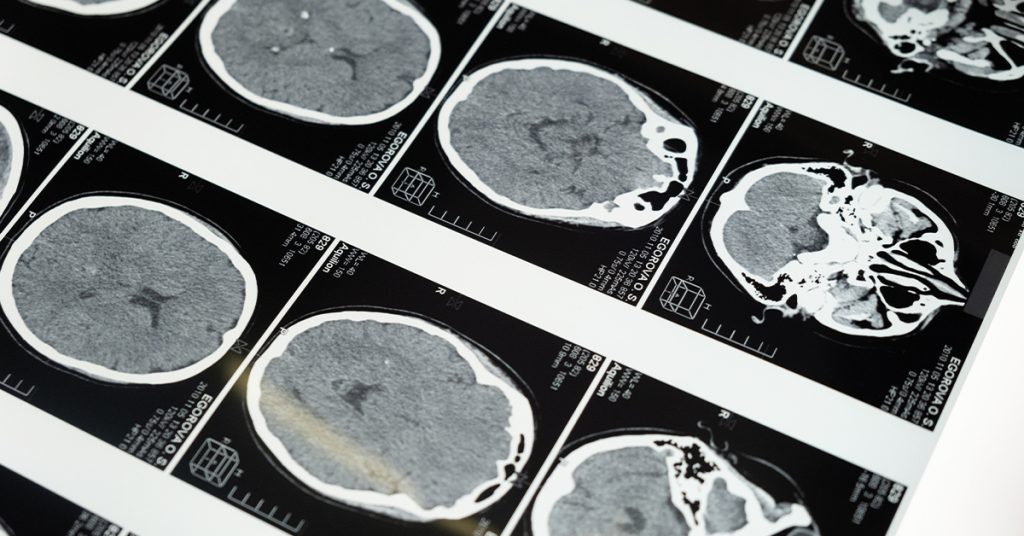The Pocket Guide to the Polyvagal Theory – Ch 13

THE NEUROBIOLOGY OF FEELING SAFE: Thoughts and Feelings: Reflections of the Brain and Body
The important role of “safety” in our life is so intuitive and so relevant that it is surprising that our institutions neglect it. Perhaps our misunderstanding of the role of safety is based on an assumption that we think we know what safety means. This assumption needs to be challenged, because there may be an inconsistency between the words we use to describe safety and our bodily feelings of safety. In the Western world, we tend to place higher value on thoughts than on feelings. Parenting and educational strategies are targeted toward expanding and enhancing cognitive processes while inhibiting bodily feelings and impulses to move. The result is a corticocentric orientation in which there is a top-down bias emphasizing mental processes and minimizing the bottom-up feeling emanating from our body. In many ways, our culture, including educa-tional and religious institutions, has explicitly subjugated feelings of the body to the thought processes emanating from the brain.
Historically, this was clearly articulated in Descartes’s (1637) statement “Je pense donc je suis” (I think, therefore I am). Descartes did not state “Je me sens donc je suis” (I feel, there-fore I am). Note that I used the reflexive form of the verb “to feel.” In French, when “feel” is used as a reflexive verb, it emphasizes that feelings reside inside the person. However, in English, the meaning of the verb “to feel” is ambiguous, meaning either the sensory feelings associated with physically touching an object or the subjective experience associated with an emotional response. Arguments regarding the relative contributions of cogni-tions and feelings have been at the core of historical questions related to how human behavior and emotional experience can be understood, modified, and optimized. Only during the past 50 years have emotion and investigation of subjective states of feeling become an accepted research domain within psychology. Prior research and its influence on educational (and parenting models) and clinical treatment models empha-sized the cognitive pathway with the objective of nurturing cognitive functions and containing subjective feelings. This focus emphasized objective, measurable indices of behaviors and cognitive functions while dismissing subjective reports of feelings.
THE STUDY OF FEELINGS AS A LEGITIMATE SCIENTIFIC TOPIC: The scientific world I entered as a graduate student in 1966 did not consider the study of bodily feelings a valid research area. It was a scientific arena in which “emotion” could be discussed only in terms of motivation. Studies of emotion were primarily conducted with laboratory rats; motivation was manipulated by controlling the availability of food, while emotional reactivity was quantified by the amount the animal defecated (e.g., Hall, 1934). It was a scientific world that preceded the resurgence of behaviorism and the interest in mental processes driven by the cognitive revolution. Behaviorism merged into applied areas as behavioral techniques were integrated into special education and clinical psychology. Cognitive science grew as new models of memory, learning, decision-making, concept formation, and problem-solving were developed and expanded into engineer-ing and computer science, as models of artificial intelligence and machine learning were generated. As improved measure-ments of brain function (e.g., brain imaging and electrophysi-ological techniques) became available to cognitive scientists, they applied imaging and electrophysiological technologies and cognitive science merged with neuroscience (i.e., cogni-tive neuroscience). Although both behavior and cognition are dependent on the nervous system, neither applied behaviorism nor cognitive science incorporated an understanding of neu-ral physiological state as a mediator of the behaviors and psy-chological processes under study. Behaviorism continued to be agnostic of the nervous system, while cognitive neuroscience focused on identifying measurable brain-based correlates of cognitive processes.
THE STUDY OF FEELINGS AS A LEGITIMATE SCIENTIFIC TOPIC: The scientific world I entered as a graduate student in 1966 did not consider the study of bodily feelings a valid research area. It was a scientific arena in which “emotion” could be discussed only in terms of motivation. Studies of emotion were primarily conducted with laboratory rats; motivation was manipulated by controlling the availability of food, while emotional reactivity was quantified by the amount the animal defecated (e.g., Hall, 1934). It was a scientific world that preceded the resurgence of behaviorism and the interest in mental processes driven by the cognitive revolution. Behaviorism merged into applied areas as behavioral techniques were integrated into special education and clinical psychology. Cognitive science grew as new models of memory, learning, decision-making, concept formation, and problem-solving were developed and expanded into engineer-ing and computer science, as models of artificial intelligence and machine learning were generated. As improved measure-ments of brain function (e.g., brain imaging and electrophysi-ological techniques) became available to cognitive scientists, they applied imaging and electrophysiological technologies and cognitive science merged with neuroscience (i.e., cogni-tive neuroscience). Although both behavior and cognition are dependent on the nervous system, neither applied behaviorism nor cognitive science incorporated an understanding of neu-ral physiological state as a mediator of the behaviors and psy-chological processes under study. Behaviorism continued to be agnostic of the nervous system, while cognitive neuroscience focused on identifying measurable brain-based correlates of cognitive processes.
HEART RATE VARIABILITY IN PSYCHOPHYSIOLOGICAL RESEARCH
In graduate school, my research produced the first published studies that quantified heart rate variability both as a depen-dent variable (Porges & Raskin, 1969) and then as an interven-ing variable (Porges, 1972). The distinction between the use of heart rate variability as a dependent variable and as an interven-ing variable is an important defining feature in understanding a paradigm shift. At the time I started my studies, psycho-physiological paradigms were defined by using physiological responses as dependent variables. This meant that physiologi-cal responses were monitored in response to a well-controlled psychological manipulation. This paradigm fit the traditional stimulus-response (S-R) model in which the psychological manipulation was the “S” and the physiological response was the “R.” Within this paradigm, my research reported changes in heart rate, heart rate variability, and respiration.
My work documented that a reduction in heart rate vari-ability was a robust indicator of sustained attention and mental effort. In conducting this research, I noticed that when partici-pants were not engaged in an attention-demanding task, there were individual differences in heart rate variability. These baseline measures of heart rate variability were related to the magnitude of the stimulus-dependent changes in heart rate and heart rate variability. Based on this observation, I started to partition the participants into subgroups defined by high or low heart rate variability (e.g., Porges, 1972, 1973). These stud-ies were prescient and led to an explosion in research publi-cations linking individual differences in heart rate variability to cognitive performance, sensitivity to environmental stim-uli, psychiatric diagnoses, and mental and physical fitness and resilience. As heart rate variability became established in the literature, others worked on techniques to enhance heart rate variability through biofeedback, breathing exercises, physical fitness, and meditation.
NEURAL MECHANISMS MEDIATING HEART RATE VARIABILITY
Once I observed the link between individual differences in heart rate variability and both measures of attention, such as reaction time, and measures of autonomic reactivity (e.g., heart rate changes), my research took on a new agenda. I directed my efforts toward figuring out why individual differences in heart rate variability were related to sustained attention and behavioral state regulation. This led to animal research in which I studied the neural regulation of the heart to understand the neural pathways responsible for the beat-to-beat heart rate pat-terns contributing to heart rate variability.
As I studied neurophysiology and neuroanatomy, I learned that buried in the literature was sufficient information to extract a neural signature of vagal regulation from heart rate variability. In a publication from the early 1900s, German physiologist H. E. Hering (1910) reported that breathing pro-vided a functional test of the vagal control of the heart. Hering stated, “It is known with breathing that a demonstrable lower-ing of heart rate . . . is indicative of the function of the vagi.”
DEVELOPING A SENSITIVE METRIC OF VAGAL REGULATION OF THE HEART
With the knowledge that vagal cardioinhibitory fibers fire with a breathing pattern, I had the necessary neurophysiolog-ical justification to transition from a global measure of heart rate variability to a more accurate component of heart rate variability that indexed vagal regulation of the heart. This led to the development of a method that quantified respiratory sinus arrhythmia as an accurate index of cardiac vagal tone. Respiratory sinus arrhythmia is the functional manifestation of vagal influences on heart rate as described by Hering. The breathing-related changes in vagal influence on the heart are manifested as rhythmic increases and decreases in beat-to-beat heart rate, with greater vagal influences producing greater dif-ferences in the rhythmic increases and decreases. Respiratory sinus arrhythmia is a functional index of a neural feedback loop that dynamically adjusts the inhibitory influence of the vagus on the heart’s pacemaker. The feedback system has inputs from the lungs and heart going up to the brainstem and also projections from higher brain areas down to the brain-stem. The output parameters of the feedback system pro-vide measures of amplitude and frequency. The amplitude is a manifestation of vagal influence, and the periodicity reflects respiration rate.
With this new tool, my research transitioned from a cor-relative approach to a neurophysiologically informed model that could continuously monitor the neural regulation of autonomic state via the vagus. With this new technology, I could accurately monitor the specific state changes in vagal regulation. By the mid-1980s, my research had shifted to studies of clinical populations that had behavioral state reg-ulation disorders, such as preterm infants. Since my research was now focusing on monitoring physiological state, I wanted to expand to clinical environments and developed a portable “vagal tone monitor” (Porges, 1985) that could monitor in hospital settings continuous values of vagal regulation of the heart. About 100 of these devices were manufactured and sold to researchers through a small company, Delta-Biometrics, which no longer exists.
INTEGRATING MEASURES OF PHYSIOLOGICAL STATE INTO S-R MODELS
From my perspective, the role of biology in both applied behavioral techniques (e.g., behavior modification) and the cognitive sciences is either lacking or underdeveloped. The integration of cognitive sciences with neural sciences did not change the model of cognitive science; it only changed dependent variables to include measures of central nervous system function. Thus, although there was a proliferation of stud-ies imaging brain function and monitoring electrophysiology from the brain, there was no shift in paradigm. These studies maintained the historic S-R model and only marginally inte-grated into their model information regarding physiology or neurophysiology.
In the world of applied behavioral science, as characterized by the membership and journals of the Association of Behavioral Analysis International (ABAI), the underlying physiological state of the subject is not assumed to be a major determinant of the S-R relationships that their methods attempt to estab-lish and strengthen. A few years ago, I was honored to give a B. F. Skinner lecture at an annual ABAI meeting. The title of my talk was “Behavior Modification Through the Lens of the Polyvagal Theory.” The talk described my personal search for variables that could measure physiological state as an interven-ing variable between the stimulus-response (S-R) relationship that defines behavioral methods. My talk reintroduced a much older model for learning that acknowledged the important role of variations in the organism as a mediator of S-R rela-tionships. In the S-O-R model (e.g., Woodworth, 1929), “O” represents the organism and serves as an intervening variable in S-R paradigms. However, historically the “O” in S-O-R models did not have a neurophysiological basis and did not use physiological state as a defining feature. My talk explained that measurement of the neural regulation of the autonomic nervous system, using measures like heart rate variability, provided an opportunity to monitor the “O” that would function as an intervening variable in paradigms and protocols designed to modify behavior. In addition, I proposed that, since physiological state can be manipulated, con-text and other intervention features could influence the “O” to enhance outcomes. I suggested that respiratory sinus arrhyth-mia, as an index of vagal regulation of the heart, be used as an intervening variable in behavior modification paradigms.
I asked whether physiological state would account for indi-vidual differences and situational variations in the effective-ness of behavior modification procedures. I suggested that new behavioral paradigms be designed within the S-O-R framework. These new frameworks would use context to manipulate physiological state toward a more optimal level of vagal regulation to functionally mediate the effectiveness of behavior modification protocols. The talk was well received and provided the attendees, who all had strong behavioral perspectives, an opportunity to incorporate a neurophysiological perspective without conflicting with their methodolo-gies and paradigms.
THE SEARCH FOR AN INTERVENING VARIABLE
My scientific journey has been a personal quest for an inter-vening variable that would contribute to our understanding of individual differences in behavior. This journey led me to an understanding of the importance of autonomic state as a neural platform for behavior and psychological experiences, includ-ing feelings of being safe. Basically, autonomic state influence on behavior is not causal in a one-to-one manner. However, the range of emergent behavior and psychological experience is limited by autonomic state. An alternative way of viewing this relationship is to conceptualize autonomic state changes as producing shifts in the probability (and possibility) that specific behaviors and psychological feelings will occur.
My journey, which led to the conceptualization of the Polyvagal Theory, actually maps into the pragmatic demands of the academic institutions in which I was affili-ated. Universities are not structured to make faculty feel safe and secure. Universities function consistently with a clear and objective evaluative model in which ideas and papers are con-tinuously scrutinized. Evaluative models, when chronic, shift physiological state to support defense. The physiological states that support defense are incompatible with those that support creativity and expansive theories. The academic environment has implicit rules, and understanding these rules has enabled me to be creative and to generate new perspectives.
In retrospect, I see my academic career as having three phases. The first phase was characterized by descriptive research to obtain tenure and promotion to associate profes-sor. During this phase, I identified heart rate variability as an important phenomenon and conducted a series of empiri-cal studies. The second phase was characterized by research on explaining the neurophysiological mechanisms mediating heart rate variability. This phase provided the scientific con-tributions necessary for my promotion to professor. Being a professor provided me the opportunity to apply the knowl-edge gained from earlier research to clinical problems. The third phase was characterized by generating the Polyvagal Theory as a basis for a brain–body or mind–body science informed by neurophysiology, neuroanatomy, and evolution. Presenting a paradigm-challenging theory is risky and, if done prematurely, can be career ending. However, it was possible for me to leverage my academic accomplishments to provide the scientific credibility necessary to present the Polyvagal Theory. For me, the third phase started more than 10 years after I was promoted to “full” professor when I presented the Polyvagal Theory as my presidential address to the Society for Psychophysiological Research (Porges, 1995). Fortunately, this phase has been very rewarding both within the academic community and the applied clinical world.
The Polyvagal Theory provided the vehicle for explaining the importance of physiological state as an intervening variable influencing behavior and our ability to interact with others. The theory provided an understanding of how risk and threat shift physiological state to support defense. Moreover, and per-haps most important, the theory explains how safety is not the removal of threat and that feeling safe is dependent on unique cues in the environment and in our relationships that have an active inhibition on defense circuits and promote health and feelings of love and trust (e.g., Porges, 1998).
SAFETY AND PHYSIOLOGICAL STATE
Safety is associated with different environmental features when defined by bodily responses versus cognitive evaluations. In a critical sense, when it comes to identifying safety from an adaptive survival perspective, the “wisdom” resides in our body and in the structures of our nervous system that function outside the realm of awareness. In other words, our cognitive evaluations of risk in the environment, including identifying potentially dangerous relationships, play a secondary role to our visceral reactions to people and places. Within Polyvagal Theory, the neural process that evaluates risk in the environ-ment without awareness is called neuroception (Porges, 2003, 2004). Consistent with this theme, the debilitating effects of challenges to our mental and physical health, which are often defined as stressing and calibrated via changes in cognitive performance, are frequently less dependent on the physical fea-tures of the event than they are on our bodily responses.
When confronted with challenges, our body functions like a polygraph (i.e., lie detector). Features in the environment that may be comfortable and enjoyable to some may be unsettling and frightening to others. As responsible humans, sensitive par-ents, good friends, mentors, and clinicians, we need to listen to our own body’s responses and respect the responses of others as we help ourselves and others navigate in an inherently danger-ous world to find safe environments and trusting relationships.
The same features of our nervous system that protect us as we navigate the world at large provide us information about the state and needs of our clients. We have this exquisitely tuned capacity to derive their state and intention from the tone of their voice, their facial expressions, their gestures, and their posture. We may not have words for this information, but if we listen to the way they make us feel, it will inform our practice.
Polyvagal Theory challenges the parameters that our edu-cational, legal, political, religious, and medical institutions use to define safety. By moving the defining features of “safety” from a structural model of the environment with fences, metal detectors, and surveillance monitoring to a visceral sensitivity model evaluating shifts in the neural regulation of autonomic state, the theory challenges our societal values regarding how people are treated. The theory forces us to question whether our society provides sufficient and appropriate opportunities to experience safe environments and trusting relationships. Once we recognize that the experiences within our societal institutions such as schools, hospitals, and churches are character-ized by chronic evaluations that trigger feelings of danger and threat, we can see that these institutions can be as disruptive to health as political unrest, fiscal crisis, or war.
Polyvagal Theory provides a neurobiological narrative that focuses on the importance of “safety” and the adaptive conse-quences of detecting risk on physiological state, social behav-ior, psychological experience, and health. The Polyvagal Theory restructures clinical disorders as difficulties in neu-ral regulation of specific circuits associated with turning off defensive strategies and enabling social engagement to sponta-neously occur. This perspective departs from traditional learn-ing models that assume that atypical behaviors are learned and can be modified through treatments informed by learn-ing theory that focus on association, extinction, and habitua-tion. While it doesn’t preclude pharmacological interventions, it departs from several features of contemporary biological psy-chiatry in which pharmacological manipulations are the pri-mary modes of treatment.
Polyvagal Theory provides the basis for a complementary model focusing on understanding and respecting physiological state as a “neural” platform on which different classes of adap-tive behaviors can efficiently be expressed. For example, differ-ent physiological states would be associated with optimal social behavior and efficient defensive strategies. An understanding of the Polyvagal Theory helps the clinician become aware of the client’s physiological state and to respect physiological state as a major determinant of the range of behavior that can be expressed. Moreover, the theory may lead to new treatments based on specific “neural exercises” that may be implemented to improve regulation of autonomic state.
THE ROLE OF SAFETY AND CUES OF SAFETY FOR SURVIVAL
As a function of evolution, the transition from reptiles to mammals resulted in a nervous system capable of identify-ing safety, especially in terms of which conspecifics were safe to be near and to touch. This adaptive skill required neural mechanisms that could turn off the well-developed defensive strategies that characterized reptiles and other more “primi-tive” vertebrates. This need for mammals to identify safety was driven by several biological needs. First, unlike our ancient extinct primitive reptilian ancestors from whom we evolved, all mammals at birth require care from their mothers. Second, several mammalian species, including humans, require long-term social interdependences to survive. For these mammalian species, isolation is “traumatic” and will severely compromise health. Thus, the ability to identify a safe environment and a safe conspecific is necessary for mammals to turn off defen-sive systems in order to parent and to express appropriate social behavior. Third, the mammalian nervous system requires safe environments to perform various biological and behavioral functions including reproduction, nursing, sleep, and diges-tion. This is especially needed during periods of great vulner-ability, such as pregnancy and early life. Nested within this need for safety to enable specific biological functions are the expression of social behavior and the regulation of emotions.
Several specific neurophysiological changes that characterize the phylogenetic transition from the primitive extinct reptiles to mammals are related to social behavior and emotional reg-ulation. Relevant to mental and physical health is the obser-vation that these circuits are not accessible in dangerous and life-threatening environments and that the circuits are fre-quently not functioning appropriately in several mental and physical disorders. Polyvagal Theory emphasizes that the neu-ral circuits that support social behavior and emotional regu-lation are available only when the nervous system deems the environment safe and that these circuits are involved in health, growth, and restoration.
Safety is critical in enabling humans to optimize their potentials along several domains. Safe states are a prerequisite not only for social behavior but also for accessing the higher brain structures that enable humans to be creative and genera-tive. However, what are the features of our institutions, such as educational institutions, governments, and medical treatment centers, in promoting states of safety? What are the priorities of our culture and society in respecting individual needs for safety? We need to understand what features in the world dis-rupt our sense of safety and realize the cost to human potential of living in an unsafe world. As we understand our vulnera-bility to danger and life threat, we have to start respecting the importance of social behavior and the social engagement sys-tem (Porges, 2007) in dampening defensive systems that enable us to form strong social bonds, while simultaneously support-ing health, growth, and restoration.
Various treatment models have been informed by Polyvagal Theory to understand bodily reactions and physiological states as a neurophysiological platform upon which they may integrate intervention techniques into an efficient therapeu-tic model. Polyvagal Theory respects how our psychological, physical, and behavioral responses are dependent on our physi-ological state. The theory emphasizes the bidirectional com-munication between bodily organs and the brain through the vagus and other nerves involved in the regulation of the auto-nomic nervous system. The theory provides a narrative to explain how evolution modified how our autonomic nervous system was regulated. As the theory developed, it became a story of how, through evolution, mammals departed from their vertebrate relatives with a new neural pathway that enabled them to signal safety and to co-regulate.
SOCIAL ENGAGEMENT AND SAFETY
From a Polyvagal perspective, the clinical interactions involving looking, listening, and witnessing illustrate relevant features of the theory: the social engagement system and the feedback from our bodily organs that contribute to the subjec-tive feelings manifested in our mood states and emotions. The social engagement system is a functional collection of neural pathways that regulate the striated muscles of the face and head. The social engagement system projects bodily feelings and is a portal for changing bodily feelings along a continuum extend-ing from a calm, safe state that would promote trust and love to a vulnerable state that would promote defensive reactions.
The act of looking and listening captures an important attribute of the social engagement system, since the process of looking at a person constitutes both an act of engagement and projects the bodily state of the observer. Based on the pro-jected bodily state of the observer, the person being “looked at” will feel that the “looker” is welcoming or disinterested. Feeling and witnessing the client encompasses the therapist’s bodily reaction to the client’s engagement behavior and the projection of the bodily feelings embedded in the therapist’s reciprocal engagement behavior.
Looking, listening, and feeling the other in the therapeutic moment is an illustration of the dynamic bidirectional commu-nication between bodily state and emotional processes during a social interaction. For the social interaction to be mutually sup-portive and to enable a co-regulation of physiological state, the expressed cues from the dyad’s social engagement systems need to communicate mutual safety and trust. When this occurs, the active participants, whether they are the child and the parent or an adult couple, are now safe in each other’s arms. The process of obtaining the state of a shared intersubjective experience is metaphorically like entering the code into a combination lock; suddenly the tumblers fall into place and the lock opens.
The link between social engagement behaviors and physi-ological state is an evolutionary product of the transition from extinct primitive reptiles to mammals. As mammals evolved, modifications in neurophysiology enabled them to cue and detect the affective states of individuals within their species. This innovation provided them with abilities to signal whether they were safe to approach, to make physical contact, and to create social relationships. Alternatively, if their cues reflected aggression or defense, then the engagement could be immedi-ately terminated without conflict or potential injury.
Through evolutionary processes, the nerves and structures that define the social engagement system and regulate facial expression, ingestion, listening, and vocalizing became inte-grated with a neural pathway of the autonomic nervous system that calms the heart and down-regulates defenses. The evolu-tionary processes that linked physiological state to the circuits that produce (e.g., facial expressions, vocalizations) and detect (e.g., sounds, tastes) features of emotion is a defining feature of mammals. Functionally, this integrated connection between bodily state and facial and vocal expressions enabled conspe-cifics to distinguish those expressing cues of safety from those expressing cues of danger and to feign death to appear to be inanimate when unable to fight or flee. This bidirectional sys-tem linking bodily states with facial expressions and vocal-izations provided the portal for social communication that involves requests for co-regulation and mechanisms to calm and repair co-regulation following disruptions.
This integrated system involves the neural regulation of the muscles of the face and head that provide cues that the other is safe to approach. Embedded in the social engagement sys-tem is our biological quest for safety and an implicit biological imperative to connect and co-regulate our physiological state with another. How we look at each other is a critical feature of this capacity to connect. Subtle cues of understanding, of shared feelings, and of intent are conveyed. These cues, often covarying with the intonation or prosody of vocalization, are also communicating physiological state. Only when we are in a calm physiological state can we convey cues of safety to another. These opportunities to connect and co-regulate determine the success of relationships, whether describing mother–child, father–child, or other relationships. The social engagement sys-tem is not solely an expression of the individual’s physiological state but may act as a portal of detection of distress or safety in others. When detecting safety, physiology calms. When detect-ing danger, physiology is activated for defense.
CONCLUSION
Polyvagal Theory provides an understanding that feeling safe is dependent on autonomic state and that cues of safety help calm our autonomic nervous system. The calming of physi-ological state promotes opportunities to create safe and trust-ing relationships, which in themselves expand opportunities to co-regulate behavioral and physiological state. This “circle” of regulation defines healthy relationships in which the relation-ship supports both mental and physical health. In this model, our bodily feelings (i.e., autonomic state) function as an inter-vening variable contributing to our reactions to others. When we are in a mobilized state characterized by sympathetic activa-tion, we are “tuned” for defense and not for promoting cues of safety or for responding positively to cues of safety. However, when the autonomic state is regulated by ventral vagal pathways, our social engagement system coordinates cues of safety through voice and facial expression to down-regulate defense in ourselves and in others. The coordination between social engagement sys-tems facilitates social connectedness. The theory provides an understanding of how treatment models not only need to respect bodily feelings but also need to support physiological states that optimize the “positive” attributes of the human experience.
Polyvagal Theory leads to an understanding that to con-nect and co-regulate with others is our biological imperative. We experience this imperative as an inherent quest for safety that can be reached only through successful social relationships in which we co-regulate our behavior and physiology. As we ponder the importance of feeling safe in our lives, we realize that understanding the physiological signatures of feelings and the cues that trigger feelings may guide us in improving our relationships and in providing support for our clients, family, and friends. Thus, to fulfill our biological imperative of con-nectedness, our personal agenda needs to be directed toward making individuals feel safe.













